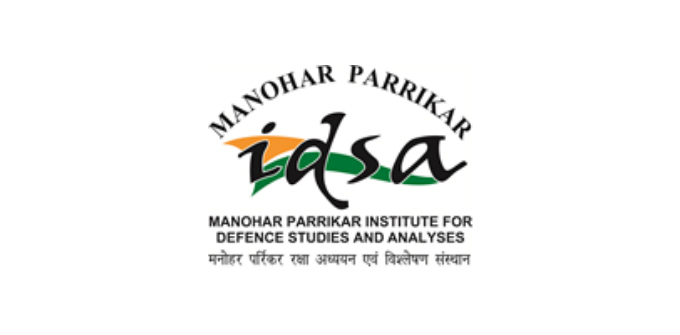
- This event has passed.
Report of the Monday Morning Meeting on “Understanding Nepal Unrest: Social Media Mobilisation and State Reaction.”

Dr. Nihar Ranjan Nayak, Research Fellow at the Manohar Parrikar Institute for Defence Studies and Analyses (MP-IDSA), spoke on “Understanding Nepal Unrest: Social Media Mobilisation and State Reaction” during the Monday Morning Meeting held on 15 September 2025. The session was moderated Dr. Smruti S. Pattanaik, Research Fellow, MP-IDSA. Ambassador Sujan R. Chinoy, Director General, MP-IDSA and scholars of the Institute attended the meeting.
Executive Summary
Dr. Nihar Ranjan Nayak’s presentation examined the socioeconomic causes, outside influences, and state responses to the student-led protests in Nepal. He emphasised the critical role of social media as a means of youth livelihood and mobilisation, the government’s contentious ban that sparked the unrest, and the rise in protests after police brutality. The economic harm, the suspected role of international civil society, and the government’s use of coercive tactics in the face of political unrest were also covered in the session. During the discussion, concerns were expressed about Nepal’s brittle democracy, the viability of Gen Z-led movements, corruption, external interventions. It was also emphasised that Nepal’s crisis has broader regional and geopolitical ramifications.
Detailed Report
In his presentation, Dr. Nihar Ranjan Nayak examined the root causes, internal factors, and government reactions to the recent wave of student-led protests in Nepal. He underlined that the situation is still very unstable and calls for close monitoring and discussion. An overview of South Asian unrest trends was given at the start of the presentation, placing Nepal’s problems within a larger regional trend of youth-led movements. Dr. Nayak drew comparisons to Bangladesh, Sri Lanka and other regional examples to emphasise the crucial role played by the youth in the current era. He pointed out that youth participation in protests is frequently associated with unemployment, economic dissatisfaction, deprivation and the use of social media to find one’s identity and means of subsistence.
The decision by the Nepali Government to ban social media on 4 September 2025, which led to massive protests, was a major topic of discussion. For many young people in Nepal, social media—especially sites like Instagram and TikTok—is a source of income in addition to being a tool for communication. The younger generation became even more irate over the ban, which they saw as an act of censorship. Another contributing factor was the government’s disregard for Supreme Court rulings regarding social media registration.
The Gen-Z group started the protests by calling for the ban to be lifted and corruption to be addressed. However, the movement grew to include five main demands after 19 protesters were killed during demonstrations on 8 September 2025. Despite being peaceful at first, disruptive elements infiltrated the protests, which caused the unrest to escalate.
Dr. Nayak also talked about the economic consequences, pointing out that Nepal has already suffered property damage estimated at USD 1.50 billion. The crisis is made worse by high unemployment rates, decreasing Foreign Direct Investment (FDI), increasing labour migration and a dependence on revenue streams derived from social media.
One major theme of the presentation, was the role of external donors and other stakeholders, indirectly affecting the dynamics. The media reports in Nepal mentioned that the Gen-Z movement allegedly received financial support from American donors, such as the Barbara Foundation and an unnamed international civil society, in spite of its disorganised structure and lack of a central leadership, although this detail has not been verified.
Moving on to state responses, Dr. Nayak described how the army participated in negotiations and how the government relied on police force, including the use of batons and bullets. The United Nations, Prime Minister Narendra Modi, and India’s Ministry of External Affairs have all made statements in response to the rapid international outcry. Notably, the Dalai Lama also congratulated the new Nepali Government.
Dr. Nayak concluded by considering the difficulties the new government faces, such as the need to restore order in the face of lawlessness, political resistance to the dissolution of parliament, and the formation of a cabinet. He emphasised that although the new government structure may benefit India in the short term, India and Nepal continue to have differences. The demonstrations show how social media has developed into a potent force behind youth mobilisation, serving as a forum for both expression and financial survival. Nepal’s political leadership, economy, and regional stability are all seriously threatened by current events. The situation presents opportunities as well as risks for India and other stakeholders, highlighting the necessity of ongoing engagement and observation.
Questions and Comments
A wide range of concerns about Nepal’s current political trajectory were raised in the discussion that followed the presentation. Setting the tone, Ambassador Sujan Chinoy, Director General, MP-IDSA, posed questions regarding Nepal’s persistent political unrest, pointing out the absence of fresh leadership and the reappearance of previous coalitions. He underlined that Nepal has not yet undergone a full transition and highlighted the “grey area” that exists there between conflict and peace. He also raised concerns about the 28 Gen Z groups’ cohesion and sustainability, specifically their capacity to quickly re-establish order, and emphasised the need for more research on their internal dynamics. The attacks on hotels during protests, the possible strain Nepal’s instability could place on India, were among the other issues he brought up. Additionally, Ambassador Chinoy called for a more thorough analysis of China’s perspective on the political shifts in Nepal.
With their own enquiries and observations, MP-IDSA research scholars expanded on these ideas. A scholar questioned the possible rise of a new political force in Nepal during the discussion, comparing it to Sri Lankan politics. In response, Dr. Nihar explained that Nepal’s struggle with the seventh constitution and the multiple amendments made over the previous ten years demonstrate the country’s ongoing political instability. He also criticised Nepal’s political leadership for lacking a clear vision and strategy, calling it disorganised and improperly coordinated. Regarding the role of outside intervention in Nepali politics, another scholar emphasised the importance of evaluating the intentions of any foreign engagement. Dr. Nihar responded by criticising the idea of a convergence of interests between China and the United States. He pointed to China’s increasing influence in Nepal, especially in relation to the Tibetan issue, and emphasised the importance of the United States keeping its largest embassy in Kathmandu, highlighting its regional significance.
The audience also discussed whether corruption has been made worse by China’s increasing influence in Nepal; some participants blamed this on institutional flaws and outside funding. The ineffectiveness of Nepal’s seventh constitution and the political leaders’ lack of vision were reflected in the country’s frequent constitutional amendments, which sparked concerns. The United States’ increasing influence in Nepal, especially the fact that it is home to the biggest American embassy in South Asia, and whether or not American and Chinese strategic interests aligned in influencing Nepali politics were the topics of another line of conversation. Some scholars disagreed, pointing out that India’s position had already become more complex due to Western misgivings about specific South Asian leaders since 2009.
Overall, the discussion emphasised how Nepal’s political crisis is intricately linked to regional geopolitics, corruption, constitutional fragility, and conflicting external interests rather than being solely an internal issue.
Report prepared by Ms. Saanya Sidhra, Intern, South Asia Centre, MP-IDSA.



